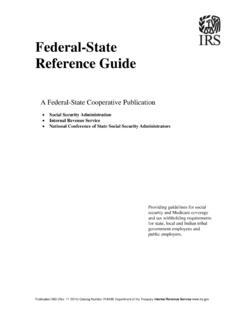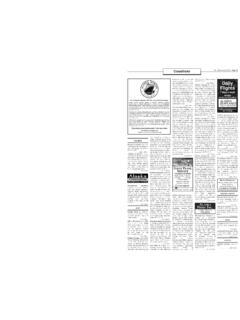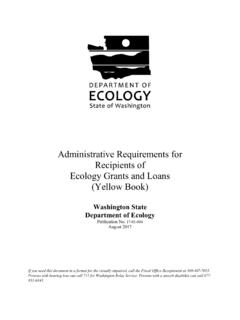Transcription of American and Japanese Education Comparative Analysis of ...
1 American and Japanese Education Comparative Analysis of Educational 99. Systems of American and Japanese Schools: Views and Visions by Craig C. Wieczorek That free government rests, as does all progress, upon the broad- est possible diffusion of knowledge, and that the Commonwealth should avail itself of those talents which nature has sown so lib- erally among its people by assuring the opportunity for their fullest development by an effective system of Education through- out the Commonwealth. Thomas Jefferson, 1779. Erasmus once said, The main hope of a nation lies in the proper edu- cation of its youth.
2 Knowing the great impact Education has on a nation, I decided to investigate the Education systems in America and Japan. In May 2006, I was able to observe and work with Japanese students, teach- ers, and administrators through the University of Toledo's Study Abroad Program. The aim of the study was to answer how educational systems or practices in Japan and America differ, and how Japanese practices might improve those of American educators and administrators. Besides many similarities, there are striking contrasts between American and Japanese views and visions of Education , and they point to quite different directions and paths of reform in the two nations.
3 While Americans are busy constructing common standards and bench- marks, developing and using more standardized tests for all students, and moving toward standards-based school reform, the Japanese seem to desire just the opposite deconstructing uniform standards, moving away from the pressures of national exams, and focusing more on the interests and potential of each student, a goal that has often been ignored in Japanese culture and schools. educational HORIZONS Winter 2008. Education in the United States Education in the United States is provided mainly by the govern- ment, with control and funding coming from three levels: federal, state, and local.
4 At the primary and secondary school levels, curricula, funding, teaching, and other policies are set through locally elected school boards with jurisdiction over the school districts. School districts can be, but are not always, associated with counties or municipalities. Educational stan- 100 dards and standardized-testing decisions are made by the states through acts of their legislatures and governors, along with their state depart- ments of Schooling is compulsory for all children in the United States. Most children begin primary Education with kindergarten at age five or six, depending upon the eligibility requirements in their districts, and com- plete their secondary Education at age eighteen or when their senior year of high school ends.
5 Some states allow students to leave school at age sixteen, before finishing high school, while other states require stu- dents to stay in school until age eighteen. Approximately 85 percent of students enter the public schools largely because they are free in other words, supported by taxes that local school districts levy. According to government data, approximately percent of all students enrolled in compulsory Education attend pri- vate schools. Most students attend school around eight hours per day, usually 175 to 185 days per year. Most schools have a summer break.
6 For about 2 months from June to Parents may also choose to educate their children at home. In fact, percent of children are home The rationales are many: maintaining moral or religious systems; individualizing curricula, espe- cially for those with learning disabilities; and avoiding negative social pressures. Home-schooling parents often form groups to help one anoth- er, and may even assign classes to different parents, similar to teaching assignments in public and private schools. Overall, the literacy rate, estimated at 97 percent by the United Nations, shares the number-one ranking with twenty other More than million students are enrolled in nursery school through undergraduate study.
7 Of those, 72 percent ages twelve to seventeen were judged academically on track for their age. Among the country's adult population, more than 85 percent have completed high school and 27 percent have received bachelor's degrees or higher. (The latter group's average beginning salary is $42,712, compared to beginning teachers' average of just below $29, However, the nation's reading literacy rate, defined as students' abilities to understand complex texts, evaluate information and build hypotheses, and draw on specialized knowledge, is low compared to other developed countries, at 86 to 98.)
8 American and Japanese Schools: Views and Visions percent of the population over age fifteen, and its science and mathe- matics proficiency also ranks below This mediocre perform- ance has pushed the private and public school systems toward standards-based assessments through the federal No Child Left Behind Act of 2001. In addition, the ratio of college-educated adults entering the workforce compared to the general population (33 percent) is slightly below the mean of the developed countries (35 percent), while the rate of labor-force participation in continuing Education is 101.
9 Education in Japan Education in Japan is a national, prefectural (provincial), and munici- pal responsibility. The Ministry of Education , Culture, Sports, Science, and Technology (known as Monbukagakusho, MEXT, since 2001) oversees dozens of internal study groups that evaluate methods of Education and provide guidance, advice, and funding to the prefectural governments based on research from the National Council on Education In the past, such guidance and advice have been followed closely, and deviations from them resulted in budget cuts and other difficulties.
10 In short, the national government bears one-third to one-half the cost of edu- cation in the form of teachers' salaries, school construction, the school- lunch program, and vocational Education and Recent reforms have given more power to the prefectural govern- ments. The MEXT also reviews textbooks to see that they are neutral in their points of view and include correct information according to grade levels. One of the important points of recent reforms is that in the past, the MEXT decided what information to include in textbooks, whose min- imal information often failed to provide students with deeper under- standing.















